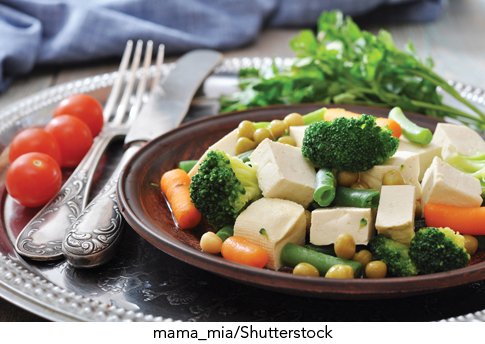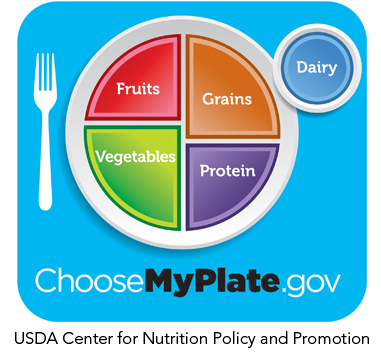PLANT-BASED AND VEGETARIAN GUIDELINES
The Academy of Nutrition and Dietetics recommends that vegetarians choose a variety of foods including whole grains, vegetables, fruits, legumes, nuts, seeds, and, if desired, eggs and dairy products (ideally the lower-fat varieties, in moderation). It also helps for vegetarians to choose whole, unrefined foods and to minimize their intake of highly sweetened, fatty, and heavily refined foods, which can be lower in nutrient content. Strict vegetarians such as vegans may need to take supplements or consume fortified food products to ensure that they are getting adequate amounts of every nutrient—particularly vitamin B12 and vitamin D, if sunlight exposure is limited. Vegetarians should consult with health care providers or registered dietitians to assist with their dietary planning and for advice regarding dietary supplement needs. There are also many dietary planning resources for vegetarians. The USDA’s www.ChooseMyPlate.org, for instance, includes useful tips for vegetarians.
Children and adolescents can be vegetarians, too, but given their higher nutrient needs to support growth and development, they may be at more risk than adults for nutrient inadequacies. Lacto-ovo-vegetarian kids grow similarly to their nonvegetarian peers, but some studies suggest that vegan children tend to be slightly smaller than nonvegetarian children, although they do tend to be within the normal range for their height and weight. (Poor growth in children has primarily been seen in children whose diets are deficient in protein, calories, and other nutrients.) When adolescents are careful to consume the nutrients they need, plant-based diets can have health advantages: research suggests that vegetarian teens consume more fiber, folate, vitamin A, and vitamin C than nonvegetarians do. They also tend to consume fewer sweets, fast foods, and salty snacks compared with nonvegetarian teens, which can reduce the risk of obesity and chronic disease later in life.
Page 200

mama_mia/Shutterstock

USDA Center for Nutrition Policy and Promotion
MyPlate gives guidance for building a vegetarian meal. Simply fill the protein portion of the plate with plant sources of protein including beans, peas, lentils, soy, seeds, and nuts.

